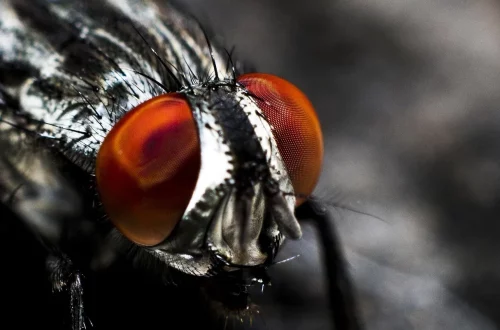
Understanding Dog Drip: Causes and Solutions for Your Pet’s Health
Understanding Dog Drip: Causes and Solutions for Your Pet’s Health
When it comes to our beloved pets, their health is a top priority for every dog owner. Dogs, much like humans, can experience various health issues that may affect their overall well-being. One such concern that can arise is dog drip, a term that refers to the unusual discharge observed from a dog’s genital area. This condition can be alarming for pet owners and often raises questions about its causes and implications.
Understanding dog drip isn’t just about recognizing the symptoms; it’s also about knowing how to approach this issue with proper care and knowledge. Various factors can contribute to this condition, ranging from infections and hormonal imbalances to more serious underlying health problems. As responsible pet owners, it is crucial to stay informed and observant regarding changes in our dogs’ health, as these can be indicators that require immediate attention.
In this article, we will delve into the potential causes of dog drip and explore effective solutions to ensure your furry friend remains healthy and happy. By equipping yourself with knowledge, you can better advocate for your pet’s health and well-being.
Common Causes of Dog Drip
Dog drip can arise from a multitude of underlying causes, each requiring a different approach for treatment. One of the most common reasons is urinary tract infections (UTIs). This condition occurs when bacteria enter the urinary system, leading to inflammation and irritation. Symptoms may include frequent urination, straining to urinate, and a strong odor. If you notice these signs, it’s important to consult your veterinarian for appropriate testing and treatment.
Another prevalent cause of dog drip is hormonal imbalances, particularly in unspayed female dogs. Conditions such as pyometra, which is an infection of the uterus, can lead to abnormal discharge. This severe condition requires immediate medical attention and is characterized by other symptoms including lethargy, increased thirst, and loss of appetite. Spaying your female dog can help prevent such hormonal issues from arising.
It’s also worth mentioning that certain skin conditions, like dermatitis, can lead to excessive licking and irritation in the genital area, resulting in discharge. Dogs with allergies, whether food-related or environmental, may be more prone to developing such skin issues. Identifying and addressing the source of the allergy can significantly improve your dog’s overall health and reduce the occurrence of drip.
In male dogs, prostate issues can lead to similar symptoms. Prostatitis or benign prostatic hyperplasia can cause discharge and discomfort. Regular veterinary check-ups are essential for older male dogs to monitor prostate health.
Lastly, tumors or growths in the reproductive system can lead to abnormal discharge. While this is less common, it is critical to be aware of the potential for serious health issues. A thorough veterinary evaluation may include imaging studies or biopsies to determine the nature of the growth.
Recognizing Symptoms and When to Seek Help
Recognizing the symptoms of dog drip is vital for timely intervention and treatment. While some discharge may be normal, especially in females during their heat cycle, any sudden changes warrant attention. Pet owners should be vigilant for signs such as unusual discharge consistency, color, or odor, which may indicate an underlying health issue.
In addition to the discharge itself, other symptoms can accompany dog drip. Frequent urination, straining, or blood in the urine are significant indicators of a urinary tract infection or other urinary issues. Behavioral changes, such as increased irritability, lethargy, or discomfort when sitting, can also signal a problem.
If you observe any of these symptoms, it’s crucial to consult your veterinarian promptly. Early diagnosis can lead to more effective treatment and a better prognosis for your dog. Your vet may conduct a physical examination, perform diagnostic tests, and inquire about your pet’s medical history and any notable lifestyle changes.
Moreover, chronic cases or recurrent episodes of dog drip should not be overlooked. Persistent issues may require a more in-depth diagnostic approach, including blood tests, urine cultures, or imaging studies. Understanding your dog’s normal habits and behaviors will aid in identifying any deviations that could signify health concerns.
It’s important to remember that while some conditions may resolve with simple treatments, others may indicate more serious underlying health issues. Never hesitate to seek veterinary care, as your dog’s health and comfort are paramount.
Effective Treatment Options
The treatment of dog drip largely depends on the underlying cause identified by your veterinarian. In cases of urinary tract infections, antibiotics are typically prescribed to eliminate the bacteria responsible for the infection. Alongside medication, ensuring your dog has ample access to fresh water can help flush out the urinary system and promote healing.
For hormonal imbalances, spaying or neutering may be recommended to prevent future issues. In the case of pyometra, immediate surgical intervention is often necessary to remove the infected uterus and prevent further complications.
If a skin condition is identified as the cause of excessive licking and discharge, your veterinarian may suggest a tailored treatment plan that could include medicated shampoos, topical treatments, or changes in diet to address allergies. It’s essential to follow the prescribed treatment regimen and monitor your dog’s response, as improvement may take time.
In the event of prostate issues in male dogs, your veterinarian may recommend medications or surgery, depending on the severity of the condition. Regular check-ups are crucial for older male dogs to monitor prostate health and catch any issues early.
Lastly, if tumors or other growths are discovered, the treatment plan may involve surgery, chemotherapy, or other interventions based on the type and stage of the tumor. A multidisciplinary approach involving your veterinarian and possibly a veterinary oncologist may be warranted.
Overall, maintaining open communication with your veterinarian throughout the treatment process is key. Regular follow-ups and check-ups will ensure your dog remains on the road to recovery and help prevent future occurrences.
Preventative Measures for Your Dog’s Health
Preventing dog drip and other health issues requires proactive care and regular monitoring. One of the most effective ways to reduce the risk of urinary tract infections is to ensure your dog has consistent access to fresh water, encouraging regular urination. This practice helps flush out bacteria and reduces the chances of infection.
Regular grooming and bathing can also play a significant role in preventing skin conditions that may lead to excessive licking and discharge. Keeping your dog’s genital area clean and dry is essential, as moisture can encourage bacterial growth. If your dog suffers from allergies, working with your veterinarian to identify and mitigate allergens can improve their skin condition and overall well-being.
Spaying and neutering your pets can prevent hormonal imbalances and related health issues. If you have a female dog, consider discussing the timing of spaying with your veterinarian, especially if she has experienced any reproductive health issues in the past.
Routine veterinary check-ups are crucial for early detection of potential problems. During these visits, your vet can perform a comprehensive examination, including urinalysis and blood tests, to monitor your dog’s health and address any concerns before they escalate.
Educating yourself about your dog’s breed and any breed-specific health issues can also aid in prevention. Being aware of the common health concerns associated with your dog’s breed will enable you to take proactive measures and seek veterinary care when necessary.
In conclusion, while dog drip can be concerning, understanding its causes and being vigilant about your pet’s health can lead to effective management and treatment. Prioritizing preventive care and maintaining a strong relationship with your veterinarian will help ensure your furry friend remains happy and healthy.
**Disclaimer:** This article is not intended as medical advice. Always consult with a veterinarian for health concerns regarding your pet.




